
It’s been a good summer. We’ve had some fine weather and I’ve been able to spend time on a beautiful part of the south Devon coast looking for the long-horned bee (Eucera longicornis). It’s one of my favourite insects and one of our rarest bees and there is a strong colony on the coast between Prawle Point and Start Point where low, soft-rock cliffs meander around headlands, in and out of rocky coves and along seaweed-covered beaches. I visited this area several times between May and July but my most interesting day was on June 23rd, just after the summer solstice.
It was breezy and warm but partly cloudy when I arrived at the coast. The sea was a uniform grey-blue although now and then the sun broke through the cloud, creating shimmering areas of white water. I started by following the coast path eastwards along the cliff top from Prawle Point. The sea-side of the path was fringed with scrub and rough grass along the cliff edge whereas the landward side was fenced and mostly used for arable farming. Many kinds of wild flower grew along both sides of the path including a few generous clumps of purple tufted vetch scrambling through the scrub. After about a mile of easy walking, the enclosed path reached a gate giving on to a broad, open area, not farmed for some years, as far as I know.
I was completely unprepared for the view that greeted me after I closed the gate. Here was a meadow where thousands of the small, dandelion-like flowers of cat’s ear moved with the breezes to create a mobile yellow canopy above the grass. Lower down were many tiny yellow globes of hop trefoil and bright pink semi-circles of common vetch. This is a paradise for insects and I saw many red-tailed bumblebee workers moving purposefully about the chrome-yellow flower heads.
But that wasn’t all: the area along the cliff edge was a kaleidoscope of purples, yellows and pinks, mostly flowering legumes such as bush, kidney and tufted vetches, bird’s foot trefoil and meadow vetchling, restharrow and narrow-leaved everlasting pea. The number and variety of flowers was greater than I can remember from previous years, perhaps the warm spring had suited the legumes.
The range of flowers, especially the legumes is ideal for the long-horned bee. I had seen one or two males back along the enclosed path and now I saw several more, also nectaring on the curving, purple, tubular florets of tufted vetch. There is something other-worldly, almost primeval about these insects with their yellow mask-like face, orange-chestnut hair (in fresh insects) and their impressively long antennae, resembling stiff black bootlaces and about the same length as rest of their bodies. They are particularly striking in flight, antennae held so that the bee can negotiate whatever obstacle it meets; controlling those antennae must involve some impressive micro-engineering. There were also females about feeding on lemon yellow pea-like flowers of meadow vetchling. Chunkier than the males, they have shorter antennae and, on their back legs, generous pollen brushes resembling golden harem pants.
I scrambled down a rough track to the main Eucera nest area, a section of reddish, soft-rock cliff, pock-marked with hundreds of pencil-sized holes. Behind me the sea soughed rhythmically on nearby rocks and an oystercatcher sang its plangent song. Female Eucera arrived at the nest site bringing pollen and nectar to provision their nests but they were not alone and I saw several other bee species that seemed to be using the nest area.
One species I had hoped to see was the very rare Nomada, and I had nearly given up hope when the bee suddenly appeared; I was so surprised, I nearly fell backwards off the rocks. Like others of its kind, it is wasp-like, with a yellow and black-banded abdomen and orange legs and antennae. It was the pattern of the bands, six yellow bands on a black body that told me that this was Nomada sexfasciata, the six-banded nomad bee, one of Britain’s rarest bees. This site on the south Devon coast is the only place where it is found in the UK; it is nationally endangered so it was very exciting to see it.
It moved about the nest area furtively as if trying not to be noticed and after looking in to a few of the holes it moved on. Later that day I had more sightings of the Nomada; whether it was the same bee or several I cannot say. As a nomad, the bee has no nest of its own but lays its eggs in the nest of another bee, in this case the long-horned bee. The Nomada eggs develop into larvae and take over the nest, killing the host larvae and eating their pollen store. It depends for its survival on a strong Eucera colony and this one in south Devon is one of the largest in the UK.
Long-horned bees and their Nomada used to be found widely across the southern part of Britain in the early 20th century. They favour a range of habitats such as coastal soft rock cliffs, hay meadows and woodland rides for nest sites and require unimproved flowery grassland for feeding, being especially dependent on flowering legumes for their pollen sources. With agricultural intensification leading to a loss of habitat, especially flowers, these bees have been squeezed out and are now confined to a very few sites.
It’s not difficult to see how they could be supported. At the south Devon site, all that is required is to ensure a consistent source of flowering legumes along the coast, the soft rock cliffs already provide the nest sites. I recently met Catherine Mitson who is working with Buglife on a project to support the south Devon colony of Eucera longicornis and Nomada sexfasciata by increasing the number of flowers. Catherine is very enthusiastic and I have great hopes now for the survival of both the long-horned bee and its nomad.
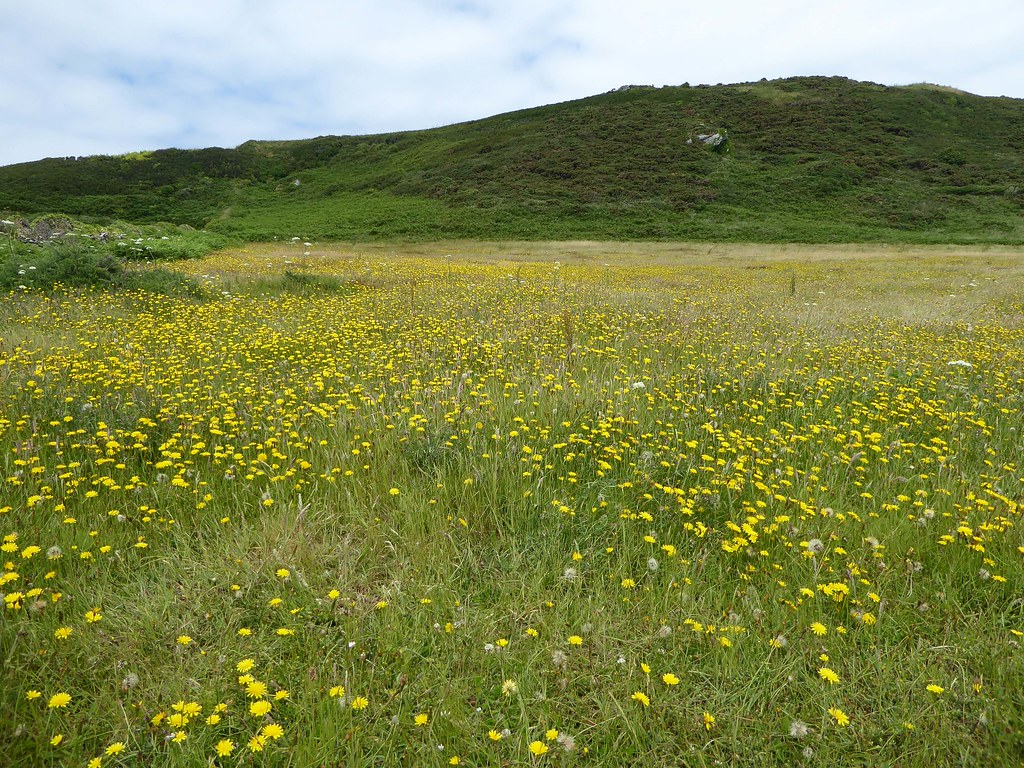
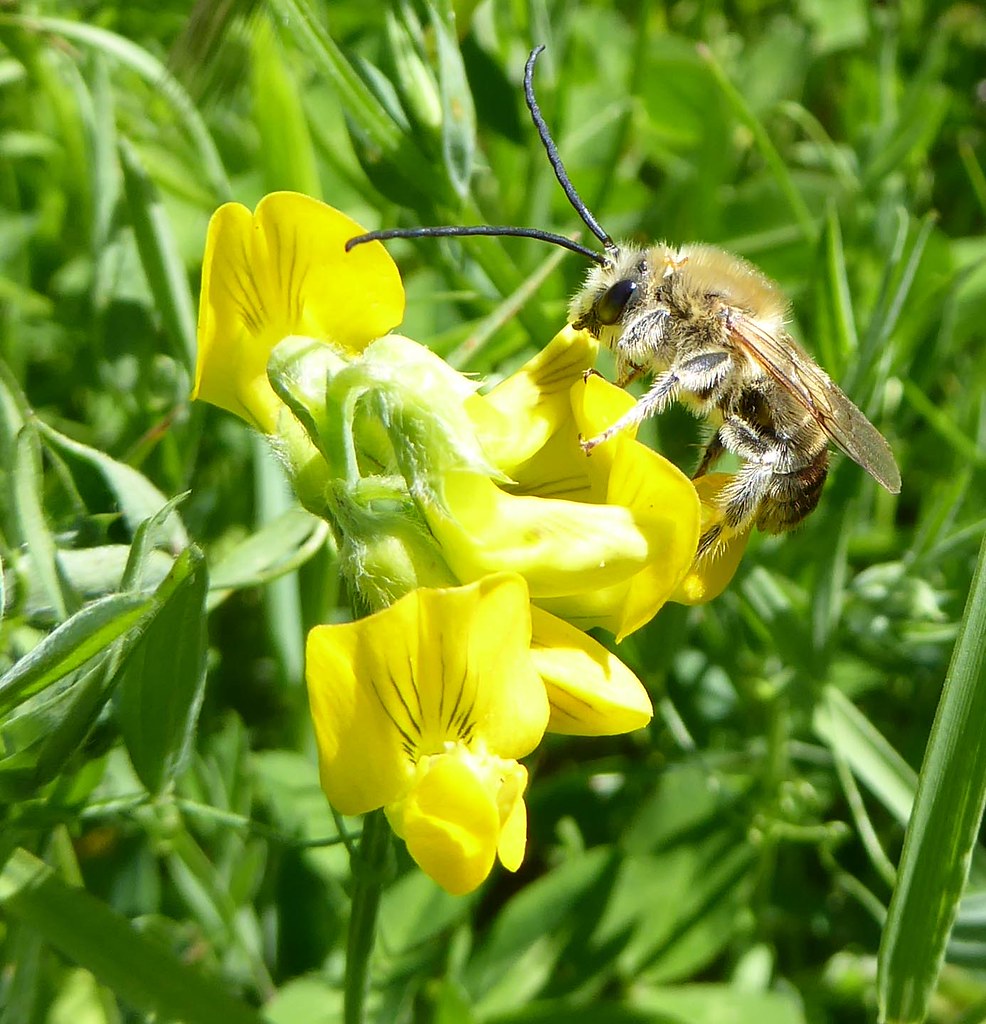

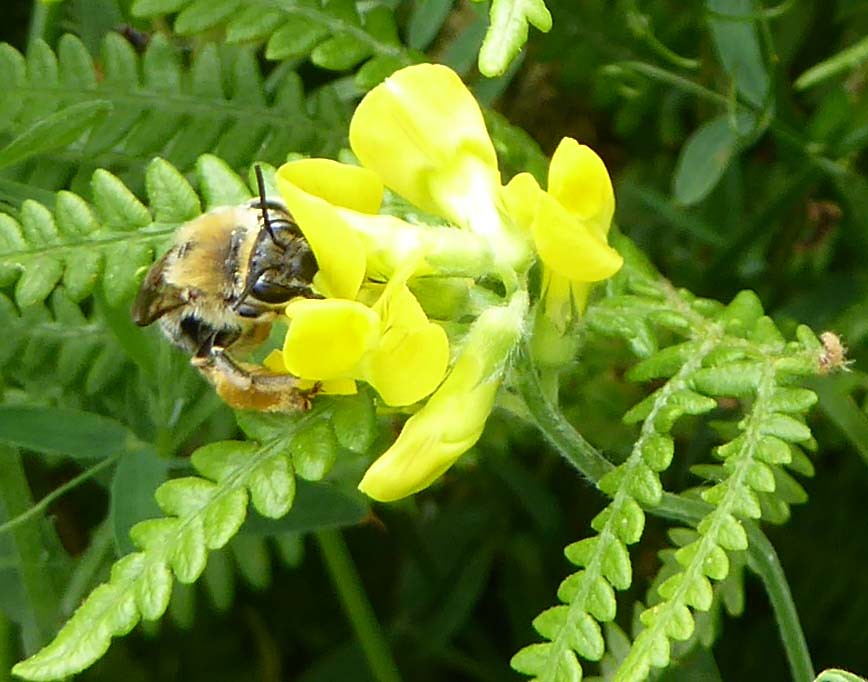
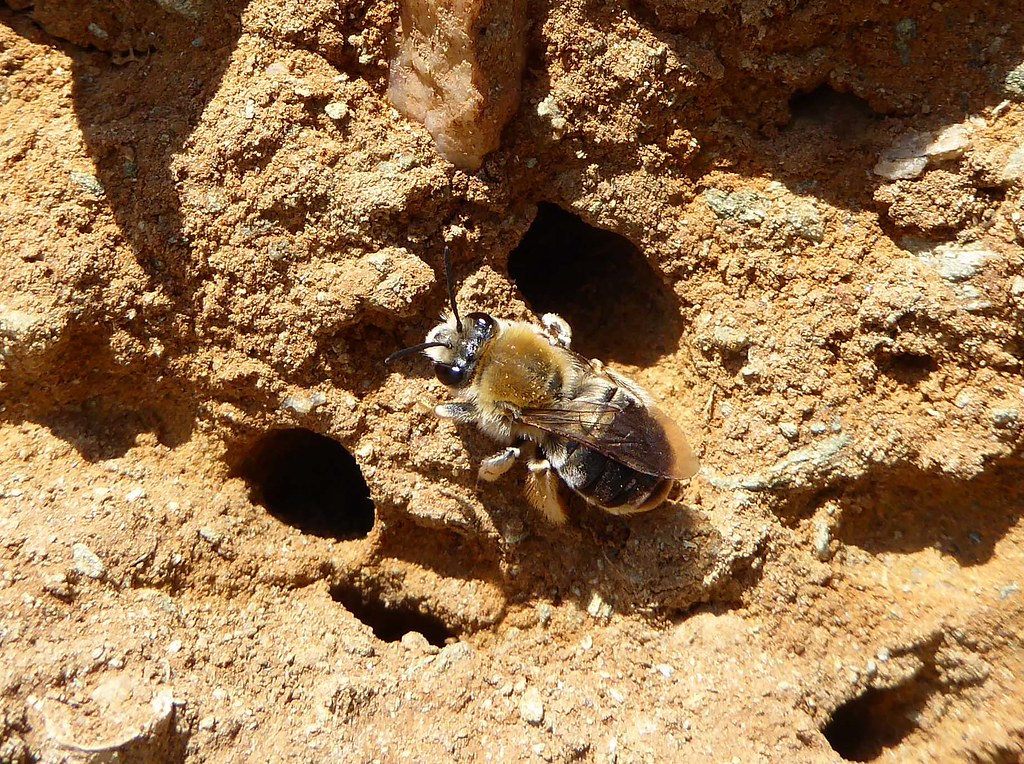
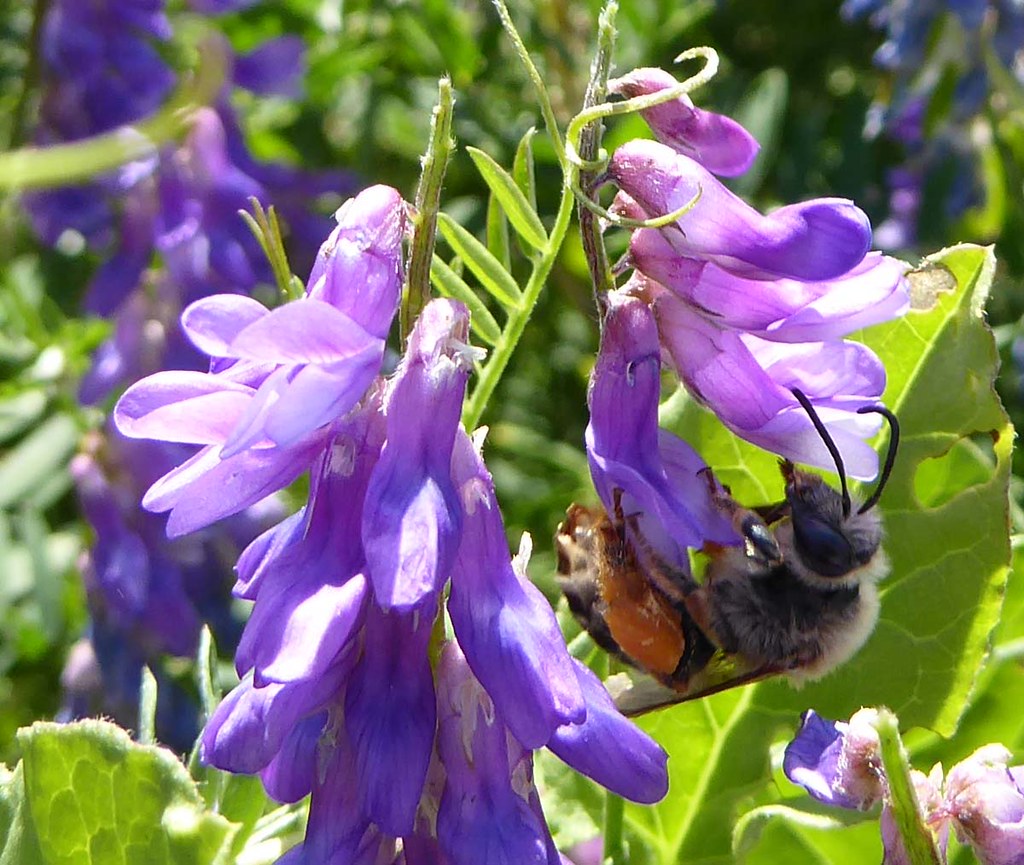
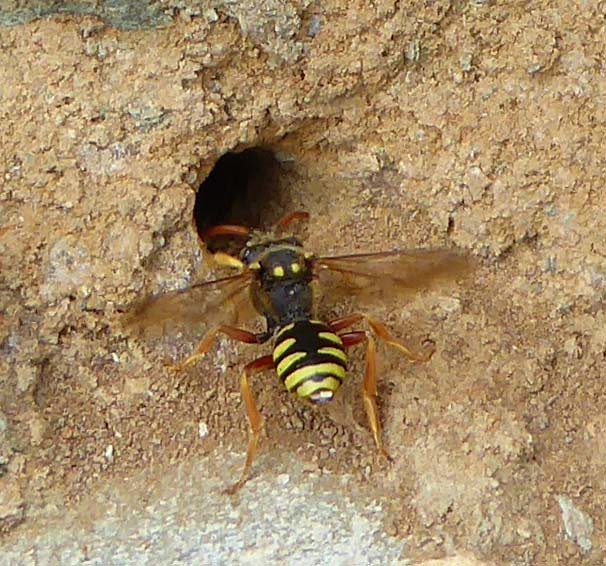
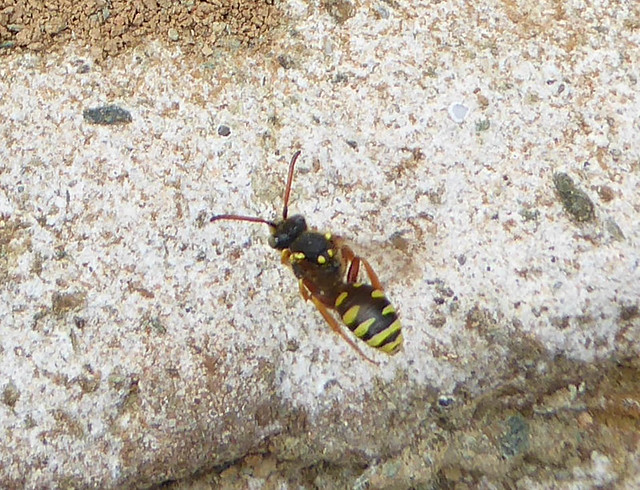
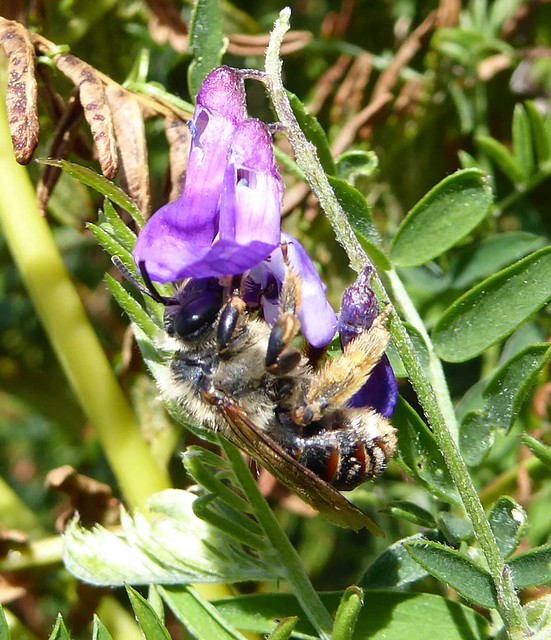
The featured image at the top of this post is a male long-horned bee on bird’s foot trefoil (May 23rd 2017)


Wow! what a glorious walk that sounded with several wonderful discoveries – I’m so glad you came across the Nomada bee and that it might be thriving there! These bees are fortunate that there are people (sadly not enough!) taking care of them and monitoring their welfare. Beautiful photos too.
LikeLike
Thanks Sue, it was a very good day and it is a lovely place to visit.
LikeLike
What a wonderful place. Your photographs are superb. I have only managed to see one Eucera. I would love to see a nest site. It is so fascinating watching bees disappearing, pollen-laden into the earth and imagining their life beneath the surface. The meadows seem perfect for Dasypoda (if it was in France, that is) did you see any? Amelia
LikeLike
Thanks Amelia. Was it a longicornis or a nigrescens you saw? They are both beautiful insects. I agree completely about the fascination of the unseen underground nest area.
I have to admit I haven’t looked for Dasypoda at this site but I will put them on my list for next year. I was there a few weeks ago on Steven Falk’s bee ID course and we didnt see any.
LikeLike
It was longicornis that I saw. I am so jealous that you have been with Steven Falk. I feel I have come to a dead end with my identification and lack of stimulation from around me.
LikeLike
The bee ID course with Steven Falk was very good, a lovely group and Steven combines a sense of humour with a great determination to identify bees and other insects. The main thing I gained from the course was some confidence in identifying certain species and knowing when I will not be able to unless I resort to a specimen and a microscope. I am sure you would enjoy one of his courses. The one I did was at Slapton Ley organised through the Field Studies Council. He does several with the FSC and they have a list on their web site. It was great fun to be immersed with other bee enthusiasts.
LikeLiked by 1 person
I am sure I would have gained so much from a course like that but also, as you mentioned, I would have enjoyed being with other enthusiasts.
LikeLike
The BWARS Facebook page is a mine of information and I have learnt a lot from it. Even if I cant identify a species the comments from the experts on other people’s queries are fascinating and very instructive. I recommend it!!
LikeLiked by 1 person
In July we were at RSPB Minsmere where we saw several different predictor bees and wasps with a great guide on hand to point out the differences between all the different species in quite a small area. Thanks for your informative post to add to my knowledge.
LikeLike
Thanks Christina, there is so much to discover and to see.
LikeLike
Gorgeous post Philip. I was on the (cliff’s) edge of my seat reading it. I was glad you escaped without injury considering all the scrambling around cliffs you were doing. Definitely worth it for the photos though. I will be moving to Cornwall soon – do you think there’s any chance I might spot these bees among the cliff tops there?
LikeLiked by 1 person
Thanks Emily, glad you liked it. You should be able to see the long-horned bees in Cornwall at several locations. Here is a link to a recent survey: http://kernowecology.co.uk/Long%20horn%20bee%20ps%202017.pdf Alternatively you could cross the Tamar and come to Devon where I would be happy to show you the colony. Hope your move goes well, where are you going to be living?
LikeLike
Thanks Philip, I’m just outside Truro now and in the process of buying a place in Truro.
LikeLike
Wow that must have been fantastic to see so many wonderful bees That is a wonderful location.Do you know if any are in Dorset? Sarah x
LikeLike
Thanks Sarah, it was wonderful to see so much. There is a report this year from Lyme Regis of the long horned bees but I dont yet know the precise location.
LikeLike
Fascinating post as always Philip 🙂 Nice photos too!
LikeLike
Thanks, Martin.
LikeLike